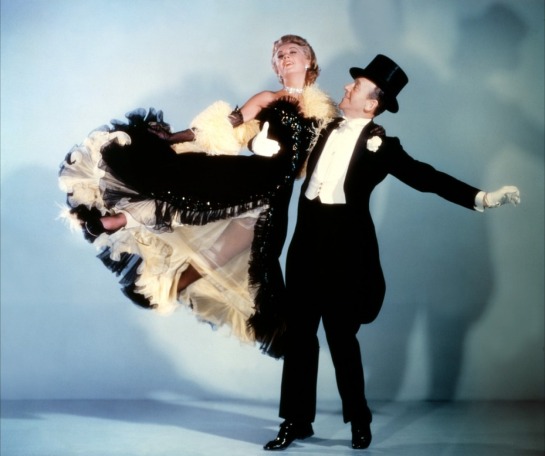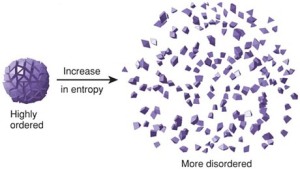Dancing With Entropy
Dancing With Entropy
In a post last year, I wrote about the nature of product development, describing its essence thus:
“The essence of product development is an intense and ongoing struggle between organising intent and entropy. Organising intent is the will of the company, manifest in the actions of its product development people, bent on meeting the goals of the company through the creation and evolution of products and product features.
Product development is fundamentally an interactive social process. We might imagine a randori situation (freestyle Aikido training) with a uke (receiver) and nage (thrower), each attempting moves and countermoves to try to defeat the other. Product development is thus a process of continuous adaptation to events, of give and take, simultaneous synthesis and dissolution. While we try to express our organising intent in the product, entropy resists us and seeks to countervail our intent. Appreciating this dynamic interplay between organising intent and entropy is essential to understanding the fundamental nature of product development.”
I suspect some folks, reading this through a certain frame, might interpret “entropy” to mean complexity, chaos, or complicatedness. And therefore, interpret my description of product development as essentially being about reducing complexity, avoiding complicatedness, or otherwise attempting to impose some order upon chaos.
This was not my meaning. I chose the word entropy carefully, although not, perhaps, carefully enough.
“Entropy: A measure of disorder in the universe.”
My frame for this choice was e.g. “the heat death of the universe”, and the widely-known quote, re the Second Law of Thermodynamics:
“The entropy of the universe tends to a maximum.”
~ Rudolf Clausius
It’s been my experience that the entropy of a software-intensive product development effort also tends to a maximum. And our task, if we wish to actually deliver something useful, is to recognise this and to find an accommodation to this “Law”.
Anywho, let’s not get hung up on the term.
My intent was to convey the idea that, in product development as much as in war, Friktion and the Fog of War both serve to frustrate the best laid plans of organising intent. Indeed, Clausewitz invented the term Friktion to describe the “resistant medium” in which war – and business – must operate.
To paraphrase Clausewitz:
“Everything in product development is very simple, but the simplest thing is difficult. In product development more than anywhere else things do not turn out as we expect. Close up, things do not appear as they do from a distance.”
For me, Clausewitz’s Friktion is “the only concept that more or less corresponds to the factors that distinguish real product development from product development on paper.”
However, Clausewitz suggests we tackle – or offset – Friktion through acts of willpower. Some business books have referred to this as “Grit”.
I’m a Lover, Not a Fighter
Here, I beg to differ. I’m much more of the opinion that, as with Aikido’s uke and nage, we would do better to learn to accommodate ourselves to Friktion (a.k.a. entropy). To embrace it, to walk with it, care for it, engage with it, and ultimately to dance with it. To regards it an asset. And yes, to love it.
“When the wind of change blows, some build walls, others, windmills.”
~ Chinese proverb
There’s a point in the book “Ender’s Game” where Ender The Genocide, having eradicated humanity’s implacable foe (the Formic race), explains:
“In the moment when I truly understand my enemy, understand him well enough to defeat him, then in that very moment I also love him. I think it’s impossible to really understand somebody, what they want, what they believe, and not love them the way they love themselves. And then, in that very moment when I love them…. I destroy them.”
~ Orson Scott Card, Ender’s Game
I feel very much the same way about entropy. In the moment when I truly understand it, understand it well enough to defeat it, then in that moment I also come to love it. At that moment, I no longer wish to defeat it, but to dance with it. To build great products together, entropy and I.
– Bob
Further Reading
Friction of War ~ Clausewitz Condensed
It’s a Lot Like Dancing: Aikido Journey ~ Terry Dobson
Product Aikido: The Exemplar Doctrine ~ FlowchainSensei



As I understand Clausewitz, you are not at odds with him. Friction’s main effect is to undermine the resolve of the team as they work towards the goal. The server will fail and the replacement will be delayed, development will be slower than expected, the third-party product will be buggy, a key developer will get sick, performance issues come up, the first user feedback is devastating, and so on. The challenge for the leader now is to keep going and keep the team motivated and on track, not to cave in and switch to a “strategy of the week” mode just because the original product vision is hard to attain.
The “soothing ailment for this friction” is experience on all levels (book I, chapter 8). The team and the leader have seen tough times before and do not despair easily. Willpower alone on part of the leader is not the answer: “An iron will crushes the obstacles, but of course the machinery along with it”. Rather, chance and entropy are encountered by experience, common sense, and intuition.
To me this is an important distinction: that one should not dance with the organizational purpose and the product vision all the time, which takes determination. It is fine, though, to dance with all the events and discoveries on the way there, which requires professionals with experience and intuition.
Thanks, Jesco.
Yes, dancing with entropy, not with the organising intent.
– Bob